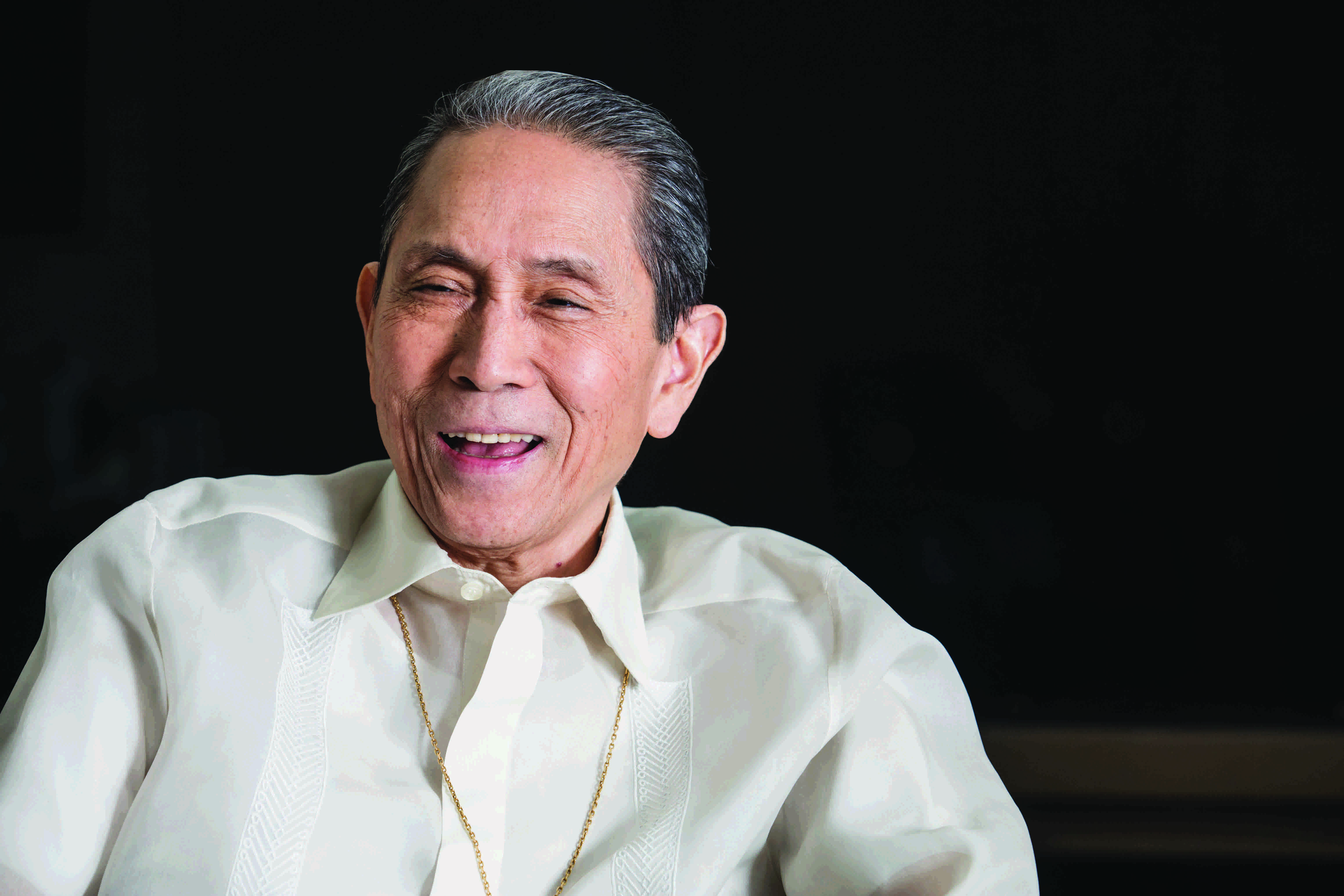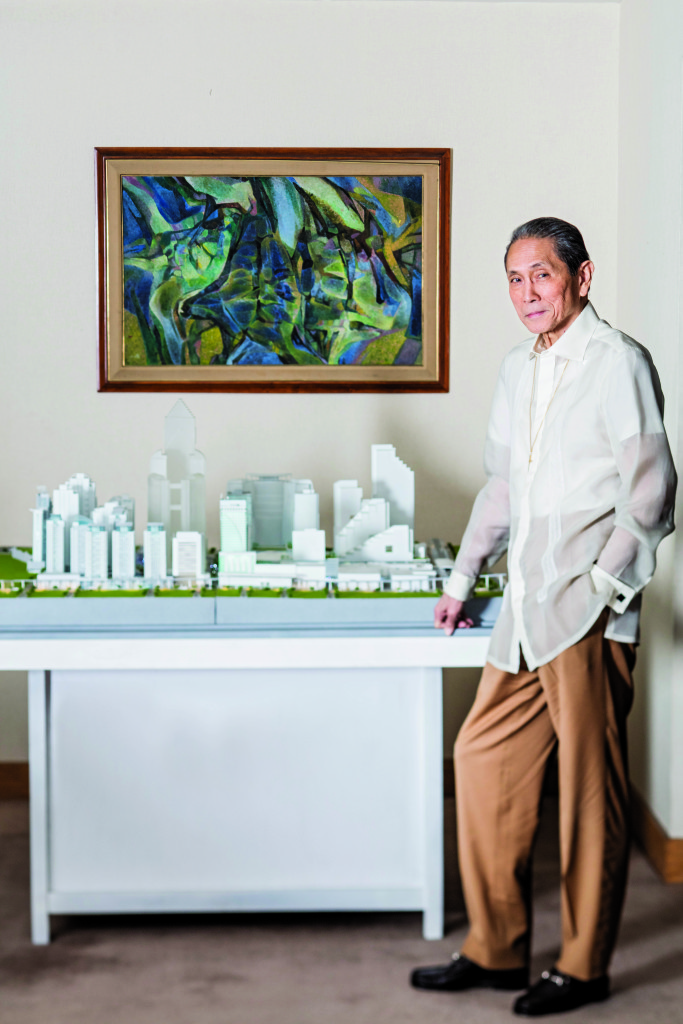By Patricia Romualdez
For the past three-and-a-half decades, Araneta Group chairman and CEO Jorge Leon “Nene†Araneta has been the driving force behind a multibillion peso expansion and redevelopment master plan for Araneta Center, Quezon City’s premier central business district that brings in an estimated one million visitors daily.
Building on his father J. Amado Araneta’s guiding vision of providing the best for the most people, Jorge Araneta’s leadership has helped shape the pioneering development company Araneta Center, Inc.’s 21st century renaissance. The completion of the Center’s “extreme transformation†into a modern, state-of-the-art, mixed-use residential, work, retail and leisure hub is finally in sight.
“It started in the 1990s, when we renovated the (Smart Araneta) Coliseum,†says Jorge of the comprehensive master plan. “Then we put up Gateway Mall, the Novotel Manila Araneta Center hotel, the two Gateway Towers and residential towers. These are the requirements of modern society. People want to work, live and play in the same place to avoid the traffic.
“We are now in our 35th year (of redevelopment). So we are close to finishing it.â€
The company has recently celebrated several important milestones. “Two thousand fifteen was a good year,†he says. The four-star business Novotel Manila Araneta Center, a joint venture with the Accor Group, was launched in November. “We’re going to finish the second building (Gateway Tower 2). We finished the Gateway Tower office, which is populated by very well known companies,†including BPOs like Accenture, AIG, Teletech and Regus, which he believes will play a big part in the future of the country’s economy. There was also the transformation of the New Frontier Theater into a 2,385-seat modern performing arts venue renamed the KIA Theatre.
Jorge Araneta started working for the Araneta Group when he was still a Business Administration undergraduate student in the University of the Philippines. “I used to spend my extra time in the office. There was a time after high school that most of my friends went abroad, and so I also entertained that idea. But my father said, ‘Why don’t you stay here and learn from me rather than go to school (overseas)’?â€
For 20 years they worked closely together until J. Amado retired in 1972. (He passed away in 1984.) The leadership transition was smooth and seamless because of their similar approaches to their work. “My father was a workaholic. He lived and breathed his business,†Jorge says. (Don Amado famously made his daily rounds at the Center’s properties to visit tenants and ask about how their business was going.) “For us, it’s not work. It’s something we like to do and look forward to doing every day.â€
In what ways were father and son different? “I have more hair!†he jokes. “My father went bald during the war.†Then he turns serious: “I think he was much bolder than I was. He built the Coliseum from nothing. I am more reserved…He really thought outside the box.â€
It was J. Amado Araneta’s bold vision that inspired him to purchase the 35 hectares of land at the crossroads of Highway 54 (now EDSA) and Aurora Boulevard from the Radio Commission of America in 1952.
After his family’s Taft Avenue home was destroyed during World War II, he started building a house in Cubao where the Aranetas’ ancestral home, Bahay na Puti, now stands. He quickly saw the potential for the surrounding property as a commercial center, though at the time there was nothing there but cogon fields and radio transmission towers, and the empty tract of land was far from the bustling downtown Manila area.
Undeterred, he bought the land, moved his family into the residence he built, developed the first structure in 1952, and started making plans for the construction of the Araneta Coliseum, the landmark arena that he believed would attract large crowds to Araneta Center.
It was an audacious move at the time. “He had gone to Rome and seen the Colosseum and he said, ‘I’ll build one just like that.’ And he did, with a local architect (Dominador Lacson Lugtu), with him being the unofficial architect,†says Jorge of his father’s big plans for the Big Dome, today known as Smart Araneta Coliseum. “He built the Coliseum against the advice of most of his friends and business advisers.â€
The venue took two years to complete. It launched in March of 1960 with an unforgettable boxing match: Cebu’s Gabriel “Flash†Elorde fought Harold Gomes for the World Junior Lightweight title. “My father decided to charge less than one peso (80 centavos) for admission,†says Jorge. “So there were 50,000 people who came and wanted to get in and they could not because the capacity was only 36,000. It was very successful.†At the time, the coliseum was the largest structure of its kind in the world.
Even beyond hosting sporting events, the Binibining Pilipinas beauty pageant (run by Jorge’s wife, Stella Marquez Araneta), concerts and variety shows at the Big Dome, the Araneta Group has always been involved in creating innovative new experiences for people to enjoy. “We had the first arena. We had the first cinema that could seat 3,000 people, the New Frontier Theater,†Jorge says proudly. “My father was the first to bring in Matzuzakaya, the first Japanese department store outside Japan. We also had the first ice skating rink. We brought in the first Cinerama theater, which is something like IMAX today.â€
The Araneta Group has carried the founder’s pioneering spirit into the next phase of diversification and expansion. Today, aside from property development company Araneta Center, Inc., the holding group also manages Philippine Pizza, Inc. (Pizza Hut, Taco Bell and Dairy Queen), Uniprom, the leisure and entertainment arm, and the Progressive Development Corp. for properties outside Araneta Center and new business ventures.
Though 2015 has been a very successful year, Jorge is staying focused on what’s next for the company. The expansion plans show no signs of slowing down. “I want to finish this,†he says as he gestures towards the sprawling scale model of the Araneta Center redevelopment master plan. “And that may take a few years. Right now we are, I would say, about 65 percent done and we have another 35 percent to go. It might take another five to 10 years.â€
He still has a long list of ambitious projects he wants to accomplish for the Center. “Maybe one or two more hotels. The second one will certainly be our Gateway Mall Expansion. By that time, the residential building will be finished.â€
He’s referring to Manhattan Garden City, a joint venture with Megaworld and the largest residential project in the Philippines. It will be made up of 18 towers, with about 9,000 apartment units in one place. “We have already finished 10 buildings, so we are more than halfway through. Only eight to go.â€
Though he’s happy to talk about his work and his company’s current projects, Jorge deflects attention when asked to talk about himself. The Araneta Center events he’s most likely to attend for fun are the basketball games in which he supports his two schools, La Salle and UP (“UP even beat La Salle this year,†he says with some disbelief) and the World Slasher Cup. His rundown of his busy day-to-day life is low-key. “I come to work. I have my lunch here most of the time. I go around, have some meetings with people, make some decisions.â€
Still, his description of his role in the business offers a glimpse of how he sees himself as a leader and the key to his company’s continued success: “I’m the official dreamer. The dreamer of things. I ask, ‘Why not?’â€
Photography by JAR CONCENGCO
Art direction by Ramon Joseph Ruiz / Grooming by ROEL PAPA






